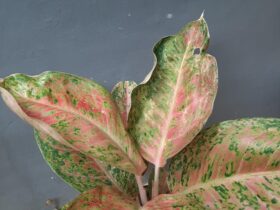With its earthy richness and ancient origins, Puerh tea stands apart in the world of teas. Unlike green or black tea, which are typically consumed fresh, puerh tea undergoes a fascinating journey of fermentation and aging that transforms its flavor and character over time. Crafted with care and tradition, puerh is more than just a beverage—it’s a cultural experience steeped in history.
The Origins of Puerh Tea
Puerh tea originates from Yunnan Province in southwestern China, where centuries-old tea trees still grow wild in lush mountain forests. Named after the town of Pu’er, where it was historically traded, this tea has been a staple in Chinese tea culture for over a thousand years. It was often transported along ancient trade routes, where it naturally fermented during long journeys, inadvertently beginning the tradition of aged puerh.Today, puerh tea continues to inspire tea lovers and collectors around the globe. For those interested in exploring a wide selection of premium puerh teas, visit PuerhCraft or check out their offerings at www.puerhcraft.com.
Harvesting: The First Step in the Journey
Crafting puerh begins with the careful handpicking of tea leaves, usually from the large-leaf varietal of the Camellia sinensis plant. These leaves are known for their strong, bold flavor and are typically harvested in the spring and autumn. Skilled workers ensure only the tender shoots and leaves are selected—each picked leaf has a promise of complexity to come.
Processing: Tradition Meets Technique
Once harvested, the leaves undergo a process known as “kill-green,” where they are pan-fired to halt oxidation. From here, puerh tea takes two distinct paths—sheng (raw) or shou (ripe).
- Sheng Puerh is the traditional form. The leaves are sun-dried, pressed into cakes, and aged naturally over years, gradually fermenting and developing deeper flavors.
- Shou Puerh, developed in the 1970s, mimics the aging process of sheng but in an accelerated manner. Through a process called “wet piling,” the leaves are heaped, moistened, and turned for months, producing a darker, mellow tea much faster.
The Art of Aging
A key element in crafting puerh is patience. Like fine wine, puerh matures with time. As it ages, the tea’s taste softens, and its aroma becomes more nuanced—woodsy, earthy, and at times even floral or fruity. Storage conditions play a crucial role here. Proper airflow, humidity, and temperature control can determine whether the tea ages gracefully or loses its charm.
Brewing and Savoring the Experience
Brewing puerh is an art in itself. A tea cake is typically broken into small portions, rinsed to awaken the leaves, then steeped multiple times. Each infusion reveals a new layer of flavor—earthy, smooth, rich, and grounding. Drinking Puerh becomes a meditative ritual, connecting you with centuries of tea artisanship.
A Living Tradition
Today, puerh tea continues to inspire tea lovers and collectors around the globe. With its deep roots in Chinese culture and evolving global appreciation, puerh remains a testament to how tradition, nature, and time can come together to craft something truly extraordinary.
Whether you’re a seasoned tea connoisseur or a curious newcomer, exploring puerh is not just about taste—it’s about embracing a living legacy in every sip.







